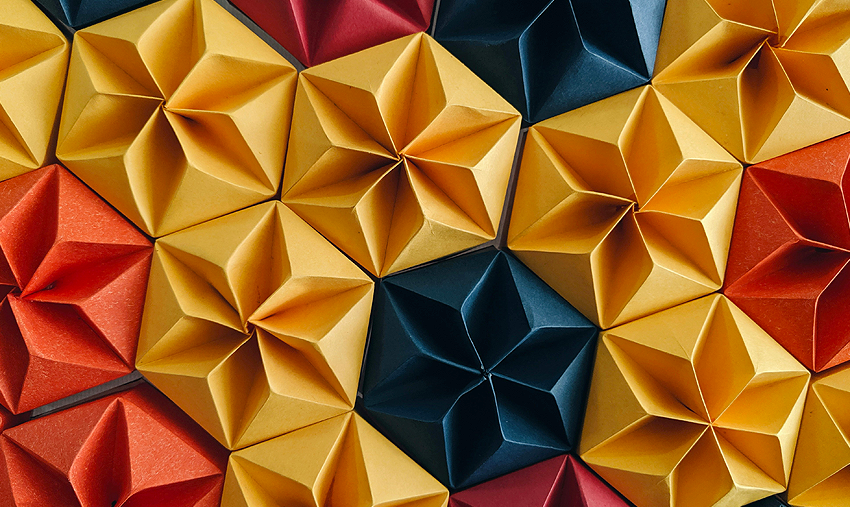Creased Lightning
Origami-inspired structures are quick to build, easy to stow

Maybe you’ve dabbled in origami before, making little folded flowers, or sailboats, or butterflies. But have you ever considered that, while it may be considered a classic art form, it can be looked at as paper-based mathematics?
One engineering team at the University of Michigan has been working on developing solutions for construction situations that require out-of-the-box thinking, such as applications in disaster zones and in outer space. And with all the precise mathematical rules required to turn a 2D sheet of paper into a 3D artwork, origami has proven to be exactly what they needed.
In a recently released paper, the engineers detail the success of their Modular and Uniformly Thick Origami-Inspired Structure system. MOTUIS uses origami-inspired concepts to design a series of collapsible components that can be easily deployed, repaired, and reconfigured, while still making for sturdy structures. In one example, they used triangular fiberboard lattices and metal hinges to make a 16-lb. column that supports over two tons of weight. In another, a cube of origami parts just 1.6 feet per side could unfold to assemble a variety of different structures including a 13-foot building column, a 13-foot pedestrian bridge, or a 6.5-foot “bus stop.”
This sounds like plenty to be excited about in the future, but origami has inspired many different applications that are already in use. Let’s unfold them and have a look!
Robots
A UCLA research team figured out how to use origami principles to build multifunctional robots. The results are low-cost, lightweight, cut-and-fold bots with various capabilities–their examples are a fly trap, a crawler, and a buggy, all with Roomba-style environment sensing. The lil guys can even be flat-packed, making them ideal for space missions.
Kayaks
Inspired by a NASA physicist-turned-origami artist named Robert Lang, nature lover Anton Willis folded up a space-saving kayak. He got to a working prototype after 25 tries, and took it straight to Shark Tank, where Robert Herjavec bought a 25 percent stake for $500,000. Willis now sells four models from his website, where he says they go “from box to boat in minutes.”
Kevlar shields
A BYU team has developed a bulletproof barrier that cops can put up and take down in seconds, folding into a small, easily-stowed package. Based on the Yoshimura angled crease pattern, the new model can protect up to three people, and weighs just 50 lbs thanks to the lightweight aluminum core within the Kevlar. Currently it’s only effective against handguns, but they’re working on tougher materials as we speak.
Telescopes
Even NASA’s James Webb Space Telescope was inspired by origami! To fit into a rocket, a telescope must fold up. When opened up, you can see the telltale origami patterns, scaled to a very big size. The foldable elements of this massive telescope include the primary mirror (with a 21-foot diameter) and sun shield (69 by 46 feet).
